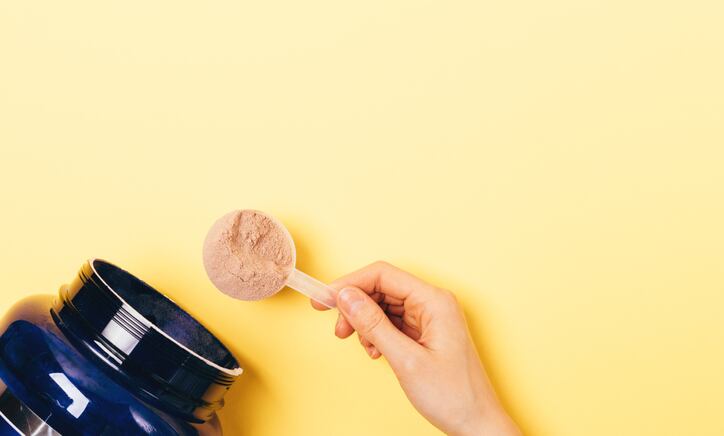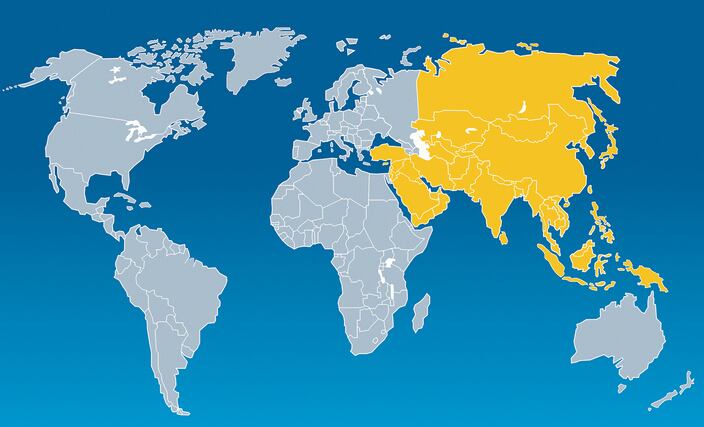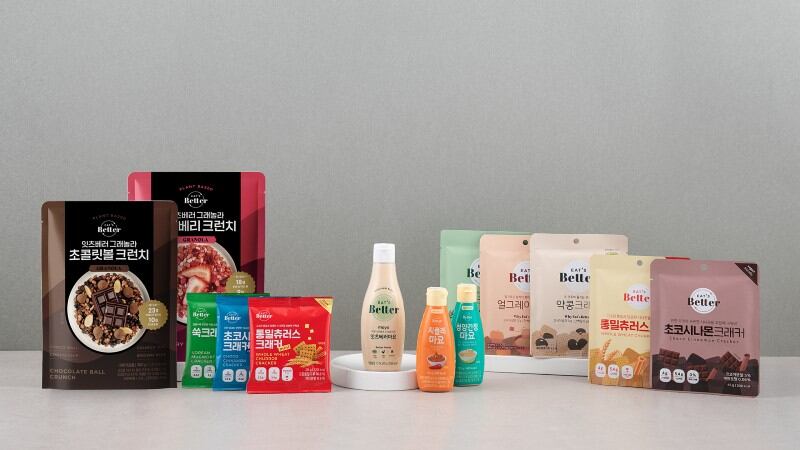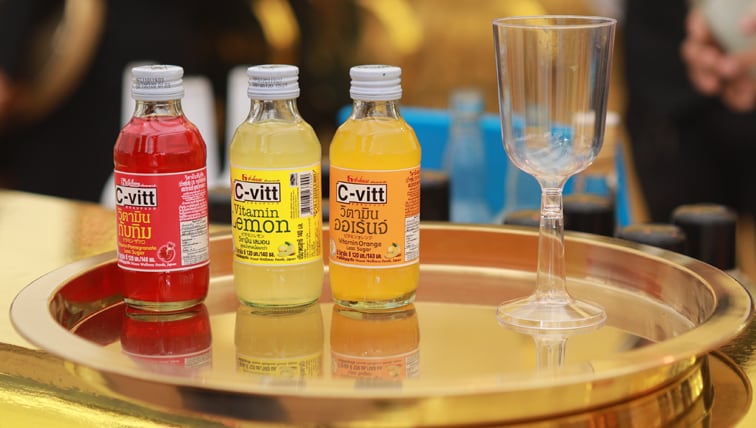The Switzerland-headquartered distributor operates in 13 APAC markets, including Australia, China, Indonesia, and Vietnam, with its Consumer Goods – FMCG business unit overseeing the distribution of vitamins, supplements, and nutrition products.
Some of the major health and nutrition brands that the company has distributed included Unilever’s OLLY, which the firm introduced into Singapore last year, and H&H Group’s Swisse into Thailand this year.
Recent partnerships also include introducing Australian Health Vitality’s IsoWhey meal replacement protein shakes into Malaysia.
The company works with retailers across both offline and online. Examples of offline retailers would include supermarket chains and personal wellness and beauty chains. Online, it works with third-party e-commerce platforms and also operates the partnering brands’ e-commerce websites.
Speaking to NutraIngredients-Asia, Arden Feschuk, Director, Business Development, FMCG, DKSH, said that prior to the pandemic, the company had witnessed modest but steady growth across the health and wellness FMCG space.
But this has escalated due to the pandemic, and consumers have been gravitating towards certain categories of health supplements.
“If you look at the pre-COVID-19 period, it has been a very modest but still, a steady growth across the health and wellness industries. There is nothing in particular that was driving this trend, other than people wanting to maintain their health through their lifestyle.
“I think the biggest impact with COVID-19 has probably been on the type of health supplements that people are gravitating towards, and that could be seen in the product category of vitamins and supplements,” Feschuk said.
New innovations
The spike in consumer demand has also fuelled new product innovation, with brands developing products with new or added benefits.

“What is interesting is that there are new functionalities or added benefits that are coming into the health and wellness space now, specifically around the immunity factor.
“One of the key examples that I can give you is the topic of probiotics. Probiotics are such a hot topic in every aspect of life nowadays, not just health and wellness, but also pet food. It has permeated into quite a lot of different categories.
“It is not seen specifically as just ‘a’ supplement. It has added benefits that add functional health for digestion, and this in turn then helps with the immunity of your overall health against [for example] a common cold,” Feschuk said.
In addition, brands are also considering how can their new products appeal to consumers of different age groups and lifestyles.
“Currently, there are more people in one household consuming supplements. [Previously], maybe only one parent was taking vitamins, but nowadays both parents are taking them, and maybe even the children, too.
“There is this kind of ‘halo’ that is touching on multiple consumers and occasions. So now, you are starting to see a lot of vitamin supplements for kids. Again, they are about the immunity and they come in all kinds of nice formats to allow kids to enjoy the experience, such as gummies, instead of tablets or capsules.
“I think there is a lot of actual innovation that has come as a direct result of the pandemic.”
Sustaining growth
On the other hand, countries with a relatively less matured vitamin and supplement market, such as Indonesia, has witnessed steep growth due to the pandemic.
“Indonesia might not be as big in size of the vitamin supplements or other segments. However, their growth rate is doing very well [amid COVID-19], and they are expected to be a lot stronger than a lot of Southeast Asian markets,” Feschuk said.
Last year, Indonesia’s gummy supplement start-up YOU, told us that sales of their adults and kids multivitamins have almost tripled due to the pandemic.
Another survey involving dietitians from Indonesia also showed that nine in 10 of them took supplements and also recommended supplements to their patients.
The key in sustaining and driving new growth areas, Feschuk said, would be a matter of time and “disruptive” innovation from the brands.
It is not just the awareness that the pandemic has brought to the table, it is actually the continued evolution of these products in their innovation and in their formats. That is going to continue to drive people to either get into it but also, to continue using it and do so more frequently.
[Therefore], can they (brands) bring something disruptive? Do they bring something that has got great functionality or format that could really be a game changer to the sales or the consumer appetite?
Formats, functionality, taste
Innovations in dosage formats, functionalities, and taste were highlighted by Feschuk as key in attracting new users and encouraging regular consumption in the long run.
“Innovation in format is about the ability to recruit people without having them to be committed in size, but also allowing the exploration on product taste, as well as [how can the product fit into] the consumers’ lifestyles,” Feschuk explained.
In categories such as sports nutrition and meal replacement, the types of formats become especially important.

Format is a big driver, especially in the sport nutrition and the meal replacement segments. It is going to be what will really drive the consumption and the frequency of purchase.
Because, first of all, if the end product is in a convenient format, like a ready-to-drink product, people are more willing to try it. It is a one-time commitment, it is not going to incur a high price, and it is something that people can consume to appease their hunger for that moment.
There is more willingness to be recruited into this with the right format (like single use sachets), and not having to buy a 30-day supply of it, because that is a big commitment.
In terms of product taste, he also advised brands to start simple, with something “that would fit the taste profile of quite a wide range of markets.”
“That is not always easy to do, so it is best to start out simple and then layer on top of other concepts.”
On top of that, the functionality of a product – such as developing a product with several benefits – is another area for innovation.
What we are now seeing, is that clients are able to add [multiple] benefits into one format. [For example], sports protein powder which also contains probiotics and maybe also collagen.
And all of a sudden, you have now tapped into three different aspects of functionalities and benefits, all in the consumption of one product, and that, I think, is what is going to continue to attract users to that category.
For the vitamin categories, he said that while it might not be as easy to change the formats, “but if there are disruptors that are coming into that category, then that will be an opportunity [as well].”
“As long as there are new formats coming out and new functionalities, there is always something that will create interest and drive people to try and use products in the health and wellness industries.”

New innovations could in turn drive consumer education and help the less-developed health and nutrition markets in Southeast Asia flourish and mature.
It is about how the consumers become more educated, broaden their usage, and their needs becoming more evident and more sophisticated.
[It is through this way] that they will grow the category themselves within these markets, and you will see more Southeast Asian markets become bigger in these areas.
Categories and markets
Asked how COVID-19 has impacted DKSH in the kinds of nutrition categories that it will focus on, Feschuk has identified four areas of interest.
They are sports nutrition, vitamins and supplements, meal replacement products, and traditional tonics.
As a result of COVID-19 and what we have seen with lockdowns, people working from home, and gyms closed, there are a lot of people who are not getting their regular exercise, whether it is just walking to the bus stop [for work] or walking around the office going for lunch.
Because of that, we know that there are a lot of people who do not feel so good about their health in terms of weight management, and so, weight management is one of those key topics.
“[And] when you look at health and wellness, it is generally divided into four or five different segments. But we will be focused on sports nutrition (protein powders), weight management, and vitamins and supplements.
“Last year, we brought OLLY vitamins into Singapore, and this year, Swisse vitamins into Thailand, and Isowhey into Malaysia. I think these are segments that we need to continue to focus and support our clients on as we go forward.”
The firm also recently signed Origins Healthcare in Singapore and is supporting existing client Brand’s Suntory in several markets.

Asked the key markets for growth, he highlighted China as the powerhouse of sports nutrition, especially in the e-commerce retail.
As for vitamins and supplements, Taiwan, Thailand, and Singapore were cited as the more mature markets.
On the other hand, meal replacement has been observed as a small but growing category, with growth dependent on the convenience of products and consumers’ understanding and appreciation of such products.
“Meal replacement products traditionally come in either a powdered form or a shake, but the ready-to-drink (RTD) format is the one that I think have a little bit more ability to permeate into the FMCG space.”
Good growth has been seen in China, Hong Kong, Taiwan, Thailand, and Singapore when it comes to the meal replacement category.
Lastly, the company is also focusing on the traditional tonic portfolio, such as Essence of Chicken from Brand’s Suntory.

“These products are more about having them on-the-go. They come in small portions and are easy to consume, and depending on the country, most of the sales are coming from the convenience stores (CVS) channel.
“That is simply because it is a small product, it gives you the nutrition that you are looking for, and it is at a low price because it is in a one-dose container.”
On average, he said that the company was able to represent a brand in more than four markets.
Our focus [as a FMCG business], is really about delivering growth for our clients and categories. We help bring in clients who [can appeal] to a wide range of consumers, without requiring the consumers to have the in-depth knowledge of the medical benefits or the claims that come with the product.
COVID-19 challenges and opportunities
In view of travel restrictions brought by the pandemic, the company has introduced a virtual market visit known as Vision.
The initiative was born out of COVID-19, where its team would video the retail stores to show clients how their products could be placed in the stores and the price points of other products etc.
A virtual market visit called ‘Vision’ is a digital innovation that we have recently introduced as an effect of COVID-19 limiting the travel of a lot of clients.
This is a value-added service from our in-store activation team to produce an in-store video as a ‘virtual tour’ of a market visit.
“We really feel something innovative like this could be helpful. However, at the heart of our activities is the engagement on eye level with our clients as our partners and working on establishing success for our businesses and looking to grow further.
“For some, who are already located in Asia, this could mean where we are looking to expand into more markets, and for others, it might be a case of looking to enter Asia for the first time,” Feschuk said.





